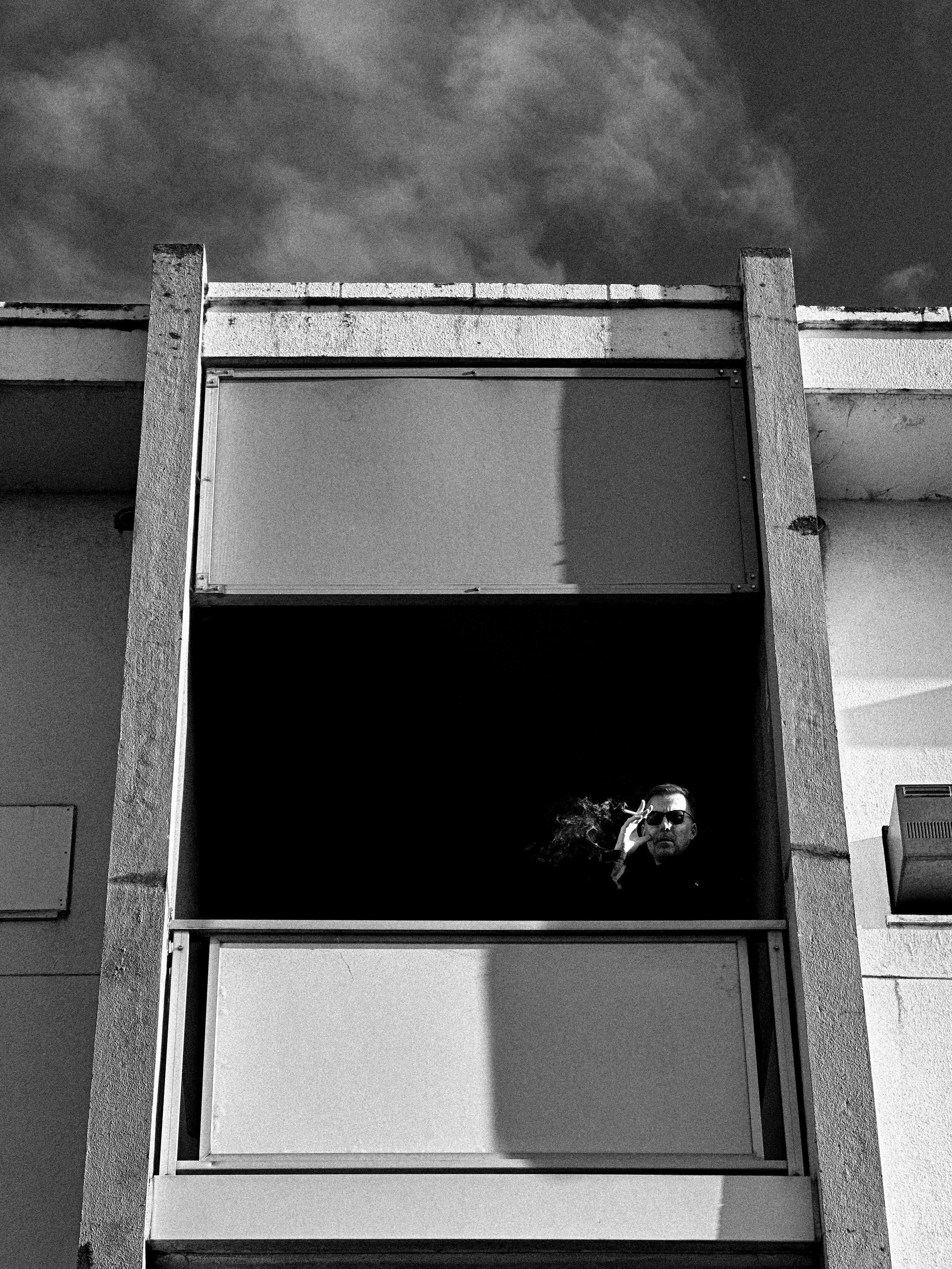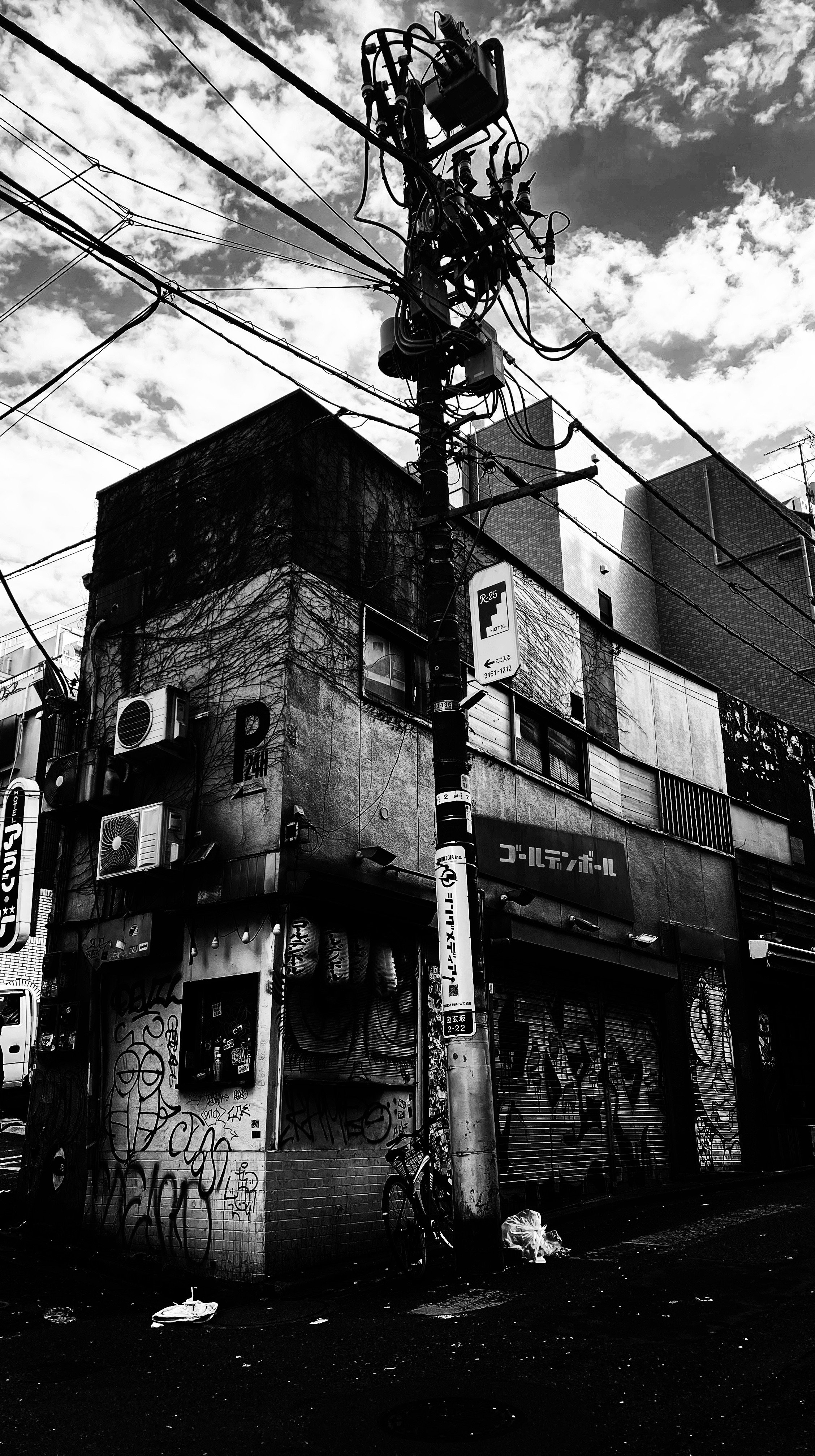Through the Director’s Lens: Mark Gill on Ravens
Director Mark Gill’s Ravens is set to premiere in Japan this March, immersing audiences in the haunting beauty of Masahisa Fukase’s world. During our conversation, Mark shared insights into his journey bringing the film to life—from deep research and location scouting to working with an exceptional cast. He has also generously shared never-before-seen behind-the-scenes images, offering an intimate glimpse into the making of Ravens through his own camera.
When I first heard that Fukase’s life was being turned into a biopic and that Tadanobu Asano would be playing him, I was stunned. My all-time favorite photographer, portrayed by one of my all-time favorite actors? It felt almost too good to be true. Mark and I initially connected online, and when he was in Tokyo filming Ravens, I had the chance to help his team find extras—a small role in the production but an unforgettable experience. Later, I attended a private screening of the film in October, and it exceeded all my expectations. The film demands multiple viewings to fully absorb its beauty and depth, and with its Japan premiere set for March 28th, I wanted to share an intimate look at its creative journey through the eyes of its director.
Capturing Fukase’s Vision
Bringing Masahisa Fukase’s world to the screen was no simple task. Known for his groundbreaking photobook Ravens, Fukase’s deeply personal, haunting black-and-white images captured themes of loss, obsession, and the unraveling self. Ravens is more than a film about his life—it is an exploration of the forces that shaped his art.
Mark’s journey with Ravens began long before cameras rolled. His first trip to Japan was originally to promote his previous film, but he soon found himself using his spare time to immerse himself in Fukase’s Tokyo. That led to further research trips—walking the same streets Fukase once roamed, meeting people who knew him, and absorbing firsthand accounts that shaped the script. “I used all my spare time to dive into Fukase’s world,” Mark recalls. “I wanted to feel the locations before I even began writing.”
One of those encounters was with Yoko, Fukase’s former wife and muse, whose presence lingers throughout his most iconic works. “She was very honest,” Mark said. “It took some time for her to trust me and understand why I wanted to make the film. But once she did, she shared some really great stories—some beautiful, some difficult.” Yoko’s approval of the final film, he admitted, was one of his greatest reliefs.
Asano and Takiuchi:
Breathing Life into Fukase and Yoko
Casting was crucial in making Ravens feel authentic. Tadanobu Asano, celebrated for his ability to shift between quiet intensity and unhinged chaos, was a perfect choice for Fukase. Mark shared that Asano needed little direction—his performance was so instinctive that most scenes were captured in just one or two takes. “If you cast the right actor, they take ownership of the character,” Mark noted. “I never try to control the performance too much—great actors bring something you never expected.”
Kumi Takiuchi, who plays Yoko, also delivered a striking performance. While the real Yoko was modern and fiercely independent, her character counterpart in Ravens had to embody both wildness and vulnerability. “Takiuchi fully embraced the intensity of the role,” Mark recalled. “By the end, she was ready to leave Yoko behind, but she loved the film.”
Mark worked closely with his longtime collaborator, cinematographer Fernando Ruiz, to create a visual experience that felt like an extension of Fukase’s photography. Every frame is moody, stark, and deeply atmospheric, drawing audiences into Fukase’s inner world. “Japanese journalists who saw the film told me, ‘You’ve made a real Japanese movie,’” Gill shared. “That was all I ever wanted—to make something that felt truly authentic.”
© Mark Gill
Other Characters: Fukase’s World Beyond Yoko
Beyond Asano and Takiuchi’s performances, Ravens brings to life key figures from Fukase’s world. One of the most striking performances comes from the actress portraying Chico, one of Fukase’s real-life mistresses. Played by Juri Kawasaki, Chico’s character serves as a stark contrast to Yoko—fully embracing the chaos and indulgence of the time. “She fully embodied that wild energy,” Mark said. “The contrast between Yoko and Chico was something I wanted to reflect, not just in the film but also in the stills I took of them.”
Another essential character is Fukase’s fictional assistant—played by Sosuke Ikematsu—a composite of the many assistants Fukase had over the years. Mark explained that while the character isn’t directly based on one person, he wanted to portray the constant presence of someone in Fukase’s orbit—an observer to his unraveling genius.
Even Fukase’s favorite drinking haunts were faithfully recreated. Mark spent time with the real-life bar owners of Golden Gai, where Fukase drank nightly, listening to their memories. “They all had different, sometimes contradictory stories,” he said. “But I wanted to capture the essence of those late-night conversations—the haze of cigarette smoke, the slurred laughter, the loneliness beneath it all.”
Never-Before-Seen Moments and a Crow’s Visit
Mark is not only a filmmaker but also a photographer, and his approach to Ravens reflects his deep visual sensibility. As we reviewed his personal behind-the-scenes photographs for this feature, he shared insights into the emotional weight they carried. Some were taken on early research trips before the script was even written, capturing the atmosphere of Tokyo and Fukase’s haunts. Others were shot during production—portraits of cast members, costume fittings, and carefully constructed recreations of Fukase’s iconic images.
While shooting Ravens, Mark documented the process not just in moving images but through his own photography, capturing the rawness of the experience. “I was constantly taking photos while filming,” he said. “It was my way of staying connected to Fukase’s perspective.”
One of the most surreal moments came just before the film’s world premiere in the U.S.—a crow landed on Mark’s car. “It felt like Fukase was there with us,” he said with a laugh. But an even stranger moment occurred while living in Tokyo: a raven came to his apartment balcony every day. “It became this eerie ritual, like the film was manifesting itself around me,” he said.
Beyond its striking visuals, Ravens is a film about love, loss, and obsession. “It’s about seeing someone through their art,” Mark reflected. “Fukase spent his life photographing Yoko, but in the end, it’s unclear if he ever truly understood her. That tension is what makes his work so powerful.”
These images offer an intimate perspective on the film, bridging the gap between photography and cinema in a way that feels deeply personal. However, as a special note for ephemere.’s readers, we’re saving some of the most striking images—and more from Mark’s meaningful conversations with Yoko–for an in-depth feature later this year.
An Invitation to Witness Ravens
As Ravens prepares for its Japan premiere, these behind-the-scenes glimpses remind us that Fukase’s legacy is more than just his photographs—it’s a life steeped in obsession, loss, and beauty. Seeing the film is not just about watching a biopic; it’s about experiencing an artist’s mind unravel on screen.
Mark reflects on what has been one of the most rewarding experiences of his career. “Making Ravens was one of the best experiences of my life,” he says. “I’ve made lifelong friends on this journey, and I feel really proud of the film. It surpassed what I hoped it would be.”
📅 Ravens premieres in Japan on March 28th.
🎞️ Watch the teaser here.
🎟️ See the screening schedule here.
Through Ravens, Mark Gill invites us not just to watch Fukase’s world but to step inside it—to see what he saw, to feel what he felt. And just like Fukase’s photographs, it demands to be seen.
All images in this article © Mark Gill.

































